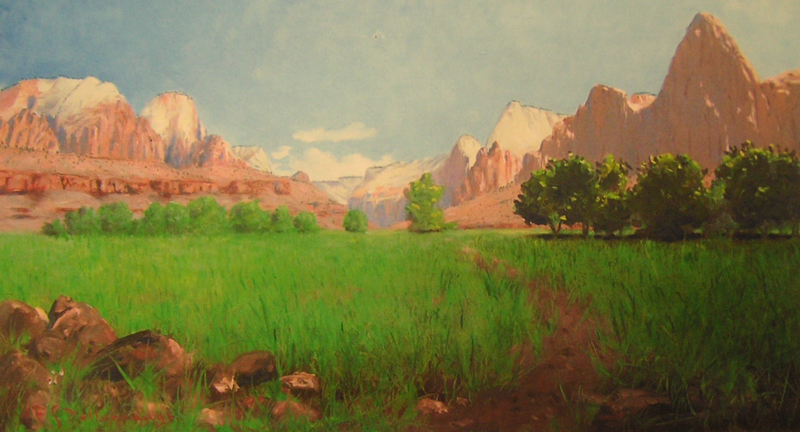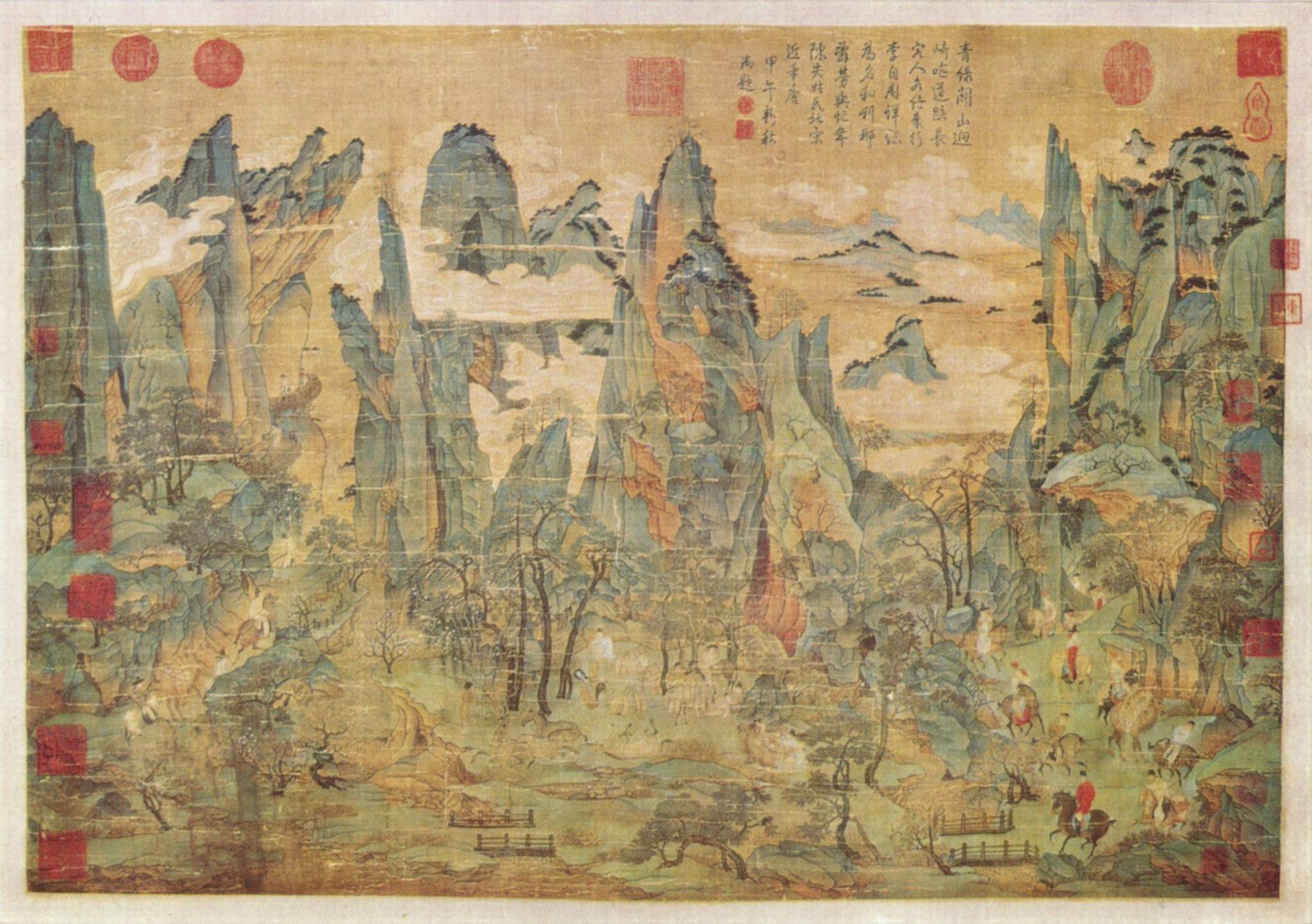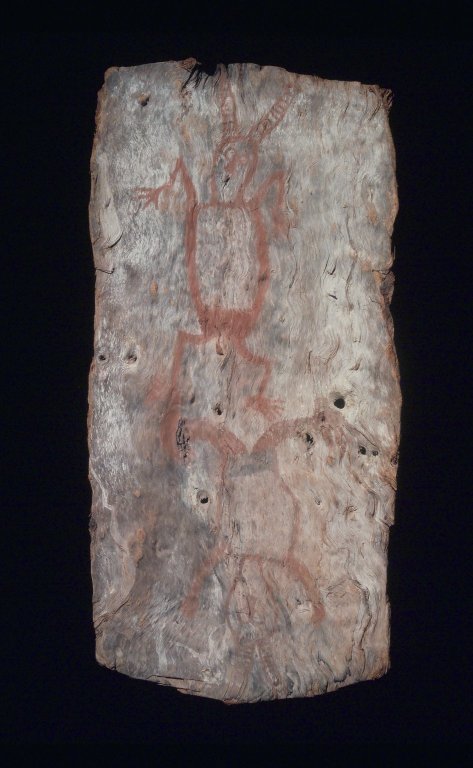Why think thus O men of piety
I have returned to sobriety
I am neither a Moslem nor a Hindu
I am not Christian, Zoroastrian, nor Jew
I am neither of the West nor the East
Not of the ocean, nor an earthly beast
I am neither a natural wonder
Nor from the stars yonder
...
My place is the no-place
My image is without face
Neither of body nor the soul
I am of the Divine Whole.
I eliminated duality with joyous laughter
Saw the unity of here and the hereafter
Unity is what I sing, unity is what I speak
Unity is what I know, unity is what I seek
...
Beloved Master, Shams-e Tabrizi
In this world with Love I’m so drunk
The path of Love isn’t easy
I am shipwrecked and must be sunk.
Rumi, translated by Shahriar Shahriari
Judeo-Persian Literature: HERE and HERE and HERE
__________
CALGARY - This year, the Persian New Year (Nowruz) on March 20, marked another day of global significance: the ten-year anniversary since the American invasion of Iraq. The hotbed issue, still on the map, is WMD (Weapons of Mass Destruction), the bane of nuclear energy. The decade of remembrance also reflects European Union sanctions imposed on the Iranian economy. While Iran is a signatory of the Non-Proliferation Treaty (NPT), which implies non-proliferation, disarmament and the right to peacefully use nuclear technology, the potential use of nuclear weapons by the Iranian government is crux of the diplomatic standstill.In a visiting lecture to the University of Calgary, Dr. Alan Dowty, Professor Emeritus and expert on Israeli politics from the University of Notre Dame, pointed out that Iran-Israel nuclear aggression in the Middle East has the potential to end the Non-Proliferation Treaty. “Canada has foregone the right to use nuclear weapons, so they have an interest in non-proliferation. Israel would join [the NPT] if the Arab-Israel conflict were resolved.” Dr. Dowty told The Media Co-op. “There is actually no way to conduct polls in Iran, so there is no recent social science research and no way to know what percentage of support base the Iranian government has.” In today’s world of globalized democracy and worldwide communications, public support, or lack thereof, is among the most consequential paths toward conflict resolution, and therefore, the greatest threat to government hegemony.
In 2006, 67% of Israelis believed in an attack from Iran was certain. In 2009, the poll fluctuated dramatically, where 79% did not think Iran would attack Israel. A poll published in the leading Israeli newspaper Haaretz confirmed that now only 27% of Jewish Israelis support an attack on Iranian nuclear facilities. “In 2009 the poll shifted dramatically but the polls themselves are hardly reliable for consistency. A different wording in the question could change answers by 20%. At the time, in the top positions of military defense represented in the Israeli government, the opinion was that an attack on Iran is implausible,” Dr. Dowty said in an interview with The Media Co-op after his recent March 18 lecture at UofC.
Diplomatic negotiations taper out as talks enter into a “full fuel cycle” right to enrich uranium. The line between nuclear facilities for energy purposes and military purposes is based on a thin margin of uranium enrichment. The Iranian government has converted 40% of the uranium enriched to the 20% level (the most threatening part of the existing stockpile) to an oxide for medical use, limiting their weapon capacity. “They blinked, they are aware they're being watched closely,” Dr. Dowty closed his lecture. “Are they serious? We'll know in the next few weeks. We'll see though, I said this last year.”
Originally published by Al-Monitor, Jerusalem Post seconds the investigation on Iran’s diverted nuclear energy resources. The article closes remarking, “With inflation and unemployment soaring and the value of the Iranian currency halved since a year ago, the vast majority of Iranians have tightened their belts to celebrate Iran's new year - or Nowruz, the nation's most important holiday.”
The Jewish Holocaust underlies much of the political negotiations on the topic of nuclear war between Israel and Iran. The Holocaust is part of Israeli policy. Netanyahu once compared the Allied failure to bomb the train lines to Auschwitz in WWII to the current standstill with Iran. Israeli politicians often compare Ahmedinjad to Hitler, an infamous Holocaust-denier. “The truth is that a nuclear-armed Iran is an existential threat of the State of Israel,” Israeli Prime Minister Netanyahu said during his 2012 Holocaust Remembrance Day speech on April 18.
Last month, Canadian Minister of Foreign Affairs John Baird made his way through an unprecedented tour into the countries to speak with political allies regarding “extremists” and “radicals” in the Middle East, specifically Jordan, which is receiving nearly half a million refugees from Syria, Iran’s ally in the Middle East. “I’m fascinated by the Arab world,” Baird is quoted in The Globe and Mail, before boarding a plane to become the first Canadian foreign minister to visit Iraq in 37 years. Yet, in Canada, the Iranian community continues to pursue a pluralistic vision of the Middle East and its emigrants both in the public and private sphere.
Recent Canadian immigrant and former history professor and senior researcher at the University of Tehran, Calgary resident Manijeh Rabieie shared with The Media Co-opabout her work. “Beginning from 2000-2003, I began to conduct research in Jewish communities, looking into their civil centers, their synagogues, their schools. I have prepared 70 articles and a book on the Jews in Iran. The government in Iran denied publication of all my work related to Jews.” The story of the Jews in Iran reflects a widely misinterpreted theme in Middle East affairs regarding religious identity, ethnicity and political rhetoric. “Jews and Christians are traditionally protected in Islamic law. Though the Jewish community has to lay low,” Dr. Alan Dowty confirmed with The Media Co-op. Dr. Dowty had once tried to attain a visa to Iran to conduct social science research as a visiting scholar. He was barred due to his extended residence in Israel.
“The Jewish community in Iran has lived in Iran for over 2500 years. Judaism is at the root of ancient culture and religion in Iranian history. Every culture in Iranian history was influenced by Jewish history. In a sense, we are all Jews,” Manijeh Rabieie told The Media Co-op. “Their schools and hospitals are segregated. Under the current Muslim government they are subject to many forms of abuse. Although there is currently a Jewish MP in Iran, the Jewish community can not take part in politics.” The presence of Jews in Iran precedes Muslim and Arab culture. Political rhetoric naming the Israel-Iran crisis as a religious conflict undermines the underlying social fabric of the Middle East.
Manijeh Rabieie plans to publish a paper to educate the public regarding the historic relationship between Persians and Jews as one people, and how this is related to peace. Rabieie said to The Media Co-op, “The conflict in Iran between the Jewish community and the government is not based on foreign policy with Israel, it's an internal problem within the society based on living under the oppressive government. The government sees all Jews as Zionists. This is not true. Iranian Jews are as Iranian as anyone else in the country, it is their culture, it's there home, that's why they remain.”
A deeper understanding of the Iranian society as a whole reveals more about the current Western paradigm and how the West views Iranians and Muslims of the Middle East, than it does about Iran itself. Recent winner of the Shaughnessy Cohen Prize for Political Writing, Calgary-based author and journalist Marcello Di Cintio spoke withThe Media Co-op on Iran, Nowruz and how the West continues to demonize Muslim culture. “Rhetoric on Iran has gone way up around the world. The nuclear program and Israel's fear promotes scary talk not backed up by facts,” Marcello Di Cintio said. “I think when we shut down embassies in Iran, it's more to do with standing in solidarity with Israel position. My biggest problem is this a symbolic action. ‘Now you can't get a visa to visit your family?’ That's ridiculous. Closing the embassy, is that our way of bringing down the regime? It's a symbolic action that has consequences on people that have done nothing wrong, that's what bothers me. I don't think people understand Iranians in Iran.”
Last month, Marcello Di Cintio wrote a short post on his website, Elsewhere, regarding his reflection with a local book club after revisiting his 2006 book, Poets and Pahelvans: A Journey into the Heart of Iran for Nowruz. Much of the content echoed what Marcello Di Cintio remarked for The Media Co-op. “There's a vast canyon between government policy and actual life. When we make decisions what does that actually mean for people who do not live in suits?” said Di Cintio. “Sanctions are not going to change things. To me, those are symbolic. You think the West hates Ahmedinijad? Iranians hate him more. It's the job of the journalists to report on government policy, and to report what the politicians are saying. They don't have time on the ground. I'm attempting to fill the void.” The Persian New Year, Nowruz, the biggest holiday in Iran, is still a non-Islamic celebration. Nowruz predates Islam.
"It’s a public holiday in parts of the Middle East, Central Asia and Europe. Thanks to global migration it’s now celebrated worldwide…It’s a non-denominational holiday…It predates modern politics, modern states and the squabbling that comes with them. This is a secular holiday…You might hear a lot about Iran in the next twelve months, its leaders, its politics, its policies, its threats, how the world reacts to them. Hey you may watch a popular film like Argo and decide that all Persians are barbaric and archaic and evil enemies of the West. Well, if you really want to get to know the culture of Iran, Persian culture that is, the literature, the family values, the poetry, the positivity, the progressive sides, and the romance, then get to know Nowruz…Here’s hoping for a peaceful and positive period for all.” Jian Ghomeshi broadcasted on CBC on March 20.As Persian New Year also celebrates the vernal equinox, coincidentally the Jewish spring holiday of Purim commemorates the story of Esther, a Jewish woman who married King Ahasuerus of Persia. Canadian politics, throughout most of the 20th century, reveals a history as anomalous from the present as a Jewish marriage to the Persian head of state is to the world of today.
In 2003, more people took to the streets in Calgary to protest the American invasion of Iraq than any public demonstration since World War Two. A fully community-funded organization at the University of Calgary known as the Consortium for Peace Studies was founded based on popular opposition to the war in Iraq. “If the Iranian people want to change the Iranian government or their situation, that's their prerogative, but if they want to change it simply because foreign powers are making their life miserable, then I don't think that's legitimate. That's just war by another means,” said George Melnyk, director of the Consortium for Peace Studies to The Media Co-op. “I would like to see Canada develop a balance where we have more neutrality, where we're not always looking at military solutions, not always taking a strong stand to support the Untied States or Britain in whatever kind of military actions they want to take. I'd like us to have another aspect to our lives which has been completely lost.”
Professor Melnyk recently published a paper entitled, Canada and Afghanistan - Peacemaking as Counterinsurgency Warfare, a Conflict in Terms. In this paper, Professor Melnyk outlines the paradoxical rhetoric of militarism together with propaganda related to national self-image in Canada. "Because Canada refused to participate in that war [in Iraq], it has been argued that it felt compelled to offer its services in Afghanistan," writes Melnyk. As Canada adopts new policies that effectively change the image of the country, the political leadership in the West (of both the world and of Canada) overrides traditional democracy. “The Canadian government, by being involved militarily in Afghanistan, of which I am critical, see Iran as the enemy. That's what happens in war, you define an enemy,” Melnyk told The Media Co-op.
Canadians are faced with new decisions and choices as government becomes increasingly self-serving and exclusive in both its military partisanship abroad and political representation domestically. “What we have is a Federal Government based in Calgary, and very powerful in Alberta. And it is pro-military, and anti-environmental. These guys are now reflecting more of the West, between Saskatchewan, B.C. and Alberta are totally energy related,” said Melnyk to The Media Co-op. “The more anti-environmental it is, the more pro-military it becomes, they are part of the same package.”
The Consortium for Peace Studies awarded the 2013 Dr. Arthur Clark Research Fellowship in Global Citizenship to sustainable housing expert Jorg Ostrowski, for a project that focuses on development in Iran called A New Silk Road of Peace. “We have a completely different approach than the Harper government. Our approach is not to get involved in this debate, this political debate between Israel and Iran. Our position is to support those people who are building people-to-people relationships,” Professor Melnyk told The Media Co-op.
Recognition for the great wealth of intercultural heritage is an increasingly important area for growth and discussion as civil society moves forward in organizational solidarity. “It is so critical to counter western threats of war with Iran. Together, as a human family with a team of visionary professionals, we can build unity and demonstrate collaboration, explore other lands and respect their traditions, seek education and understand other perspectives, work for common security and build a lasting peace, for all species and our common environment and world heritage,” Ostrowski shared with The Media Co-op via email.
Still, with all of the activism in Canada to facilitate social stability in Iran, for democratic diplomacy in the Middle East, and lasting peace, there are countless who continue to suffer unjustly in Iran. As residents of Canada, active in working towards greater democracy and justice, the focus remains ever on the plight of innocent civilians. While the Canadian government works towards the proposed resolution of the greater evil, i.e. nuclear conflict, the gap between civil society and government widens due to the growing pertinence of foreign policy. It is becoming more and more clear to Canadian residents that with every government measure to protect Canada and other Western nations, including Israel, from a nuclear conflict, the costs of war by another means begin to show its ugly face.
"Persian Jews and the Iran-Israel Crisis: Canadian Civil Society Works Toward A New Year of Peace and Understanding" previously appeared on The Media Co-op
___________
 |
| ruins of ruins by RK |
 |
| the entrance is the exit by RK |
 |
| dan tien sky by RK |
 |
| old world taste by RK |
 |
| belly of the ultra modern beast by RK |
_____________
"turning over the ashes of the Unnamed" is a piece commemorating the Indigenous struggles of Latin America. Initially, the writing process is based on experiences in Yucatec Maya communities. Recently, the sounding was recorded while following the tragic cycle of intermittent, and ultimately, futile justice in Guatemala to reconcile its genocidal history. The track is featured on the Sound-Art EP "Evocations: Exotic Settlers"
In nearly every traveller's experience, the settlements of (un)civilization often provide an impermanent, temporal space even for the most autonomous of vagabonds. Especially in my experience, the piano has been a portal through which my sojourning meets the firm legs of tradition. In this union, both the ephemeral and everlasting are bonded under a greater mystery of the always passing, transient truth, elevating us to a higher sense of travel as mutually relative to the foundational ground of human tradition. Memory and history seed the pangs of movement with the brilliant emanations of creative ingenuity and inspired reflection.
So, in this track, imagine the traveller, or "exotic settler" chancing upon a piano under the weary heel of an empty horizon ahead, and the spiralling beauty of tradition below. "turning over the ashes of the Unnamed" is featured in the new self-published chapbook, "The Deceived Plane"
In nearly every traveller's experience, the settlements of (un)civilization often provide an impermanent, temporal space even for the most autonomous of vagabonds. Especially in my experience, the piano has been a portal through which my sojourning meets the firm legs of tradition. In this union, both the ephemeral and everlasting are bonded under a greater mystery of the always passing, transient truth, elevating us to a higher sense of travel as mutually relative to the foundational ground of human tradition. Memory and history seed the pangs of movement with the brilliant emanations of creative ingenuity and inspired reflection.
So, in this track, imagine the traveller, or "exotic settler" chancing upon a piano under the weary heel of an empty horizon ahead, and the spiralling beauty of tradition below. "turning over the ashes of the Unnamed" is featured in the new self-published chapbook, "The Deceived Plane"
"The Deceived Plane" is a six poem chapbook on themes of social failure, the unsustainable psyche of Western Man, devolving at an insuperable pace through the mire of good intentions.
Beginning with personal irreconcilable defeatism in the breakdown of the Western family, towards a psyche of madness and the unwilling expansion of selfish ego into greater realities of the imagination, spirit and creativity.
Yet, each of the six poems reveals and awakes the deleterious mind of foul vanity with a brushstroke of unitive spirituality. The wake of greed pulls back in a tidal rush of release, and so these poems offer the ingredients of a raft on which to traverse the open oceanic beyond.














